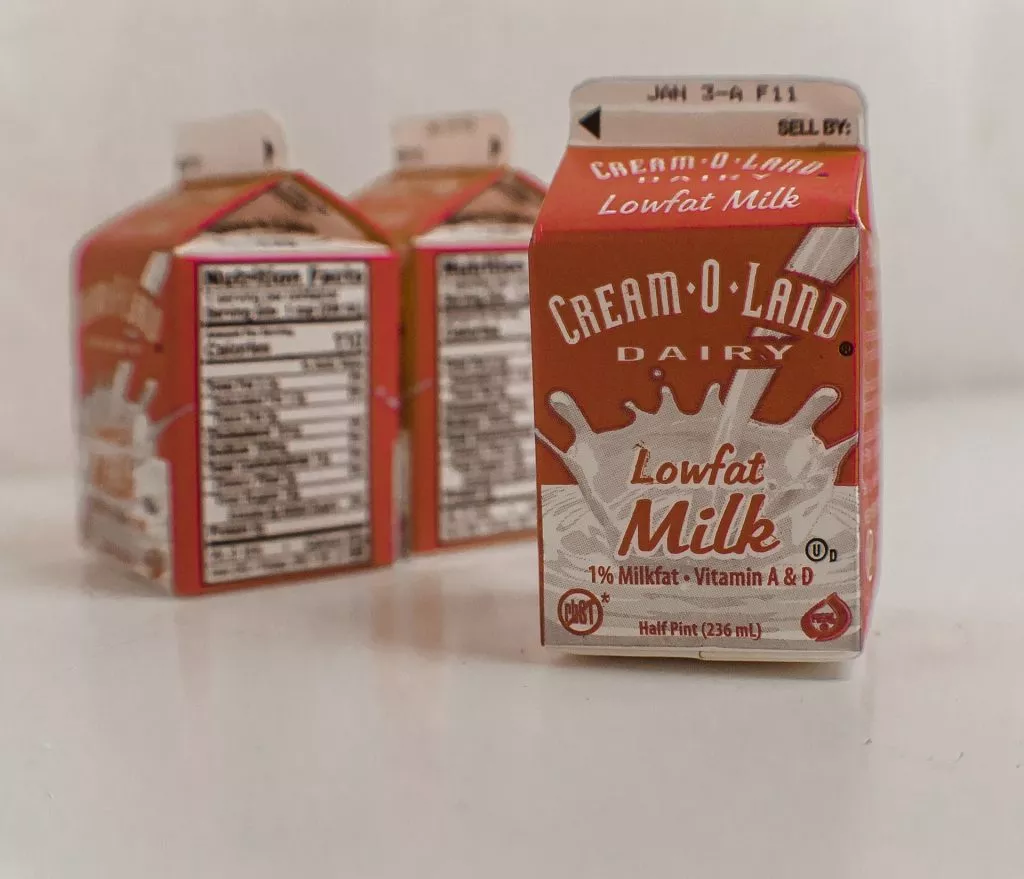We’ve all been there. We want to eat healthier but don’t know where to start.
We wander the aisles of the grocery store, aimless and hungry, hoping it will inspire us. But when we get to the register and look down, we see a cart full of junk food that can wreak havoc on our bodies…
Based on the labels, we think we’re doing a good job. But we end up with excessive amounts of sodium, sugar, and artificial ingredients.
OH MY!
Avoid these deceptive foods and learn how to spot sneaky junk foods the next time you go shopping. Let’s look at fake health food labels and healthier swaps we can make instead.
1. Fat-free
Remember the low-fat and fat-free craze of the nineties? If the package had the words “FAT-FREE” emblazoned on the outside, it made its way into our home and into our hearts. We would even feel proud of ourselves for making the healthy choice.
The truth is, these snacks are loaded with extra sugars and filler to make them taste fatty. Because, let’s face it, fat tastes good.
But instead of eating loads of fake and processed foods, make your own cookies using whole and healthful ingredients. Use real butter, or better yet, make ghee. Use farmers’ market eggs and freshly milled flour of your choice. Add a little natural sweetener, like honey or dates. That tastes way better.
2. Energy bars
Sometimes we need a quick and powerful bite when we’re on the go, so we grab an energy bar. We’ve been deceived into believing that we need a hit of these protein bars to get us through the day.
But these bars aren’t as healthy as they appear. They’re filled with processed ingredients like brown rice syrup and sugar.
Put the energy bar down, and make your own. You can whip up a tasty batch of granola bars or energy balls using wholesome ingredients you probably already have in your pantry.
3. Natural juices and smoothies
Juice and smoothies are good for us, right? They’re filled with wholesome juice! Well, not entirely.
Juice and smoothies often contain additives and concentrated juices. Some even add artificial colors and flavors. Plus, with the amount of sugar in bottled juices and smoothies you find at the grocery store, your blood sugar levels will spike off the charts.
Alternatively, eat a handful of grapes or an apple. The fiber in whole fruit will keep you full and help slowly release the fruit sugars keeping your blood-sugar level feeling fine.
4. Sugar-free
All this talk of sugar levels spiking might have you reaching for the sugar-free options. Not so fast. Sugar-free is code for artificial sweeteners.
Our bodies don’t like those so much. Sugar-free sweetener has been linked to cancer, headaches, and an unhealthy gut.
If you can’t go without adding a packet of sweetener to your iced tea or coffee, switch to a raw sugar packet instead. It isn’t chemically altered. Plus, it tastes better. It’s a win-win.
5. Gluten-free
It’s safe to say that most health-conscious people are a little concerned about gluten.
But the problem with gluten-free foods is that they’re loaded with a whole mess of other starchy ingredients that are hard on our digestive systems.
Gluten-free options also contain more sugar, calories and sodium. So instead of buying into the hype that all gluten is bad… Eat whole, unprocessed grains. They are full of nutrients and protein to keep you full longer.
6. Vegan
While it’s always a great idea to eat fewer animal products, choosing a vegan option doesn’t always mean healthier.
You can still eat junk food and be a vegan. French fries and beer are vegan, as are most chips and hard candy.
For instance, vegan ice cream has more additional calories than its dairy counterpart. Not to mention, the stabilizers, gums, and fillers that are added to make it creamy are tough to digest.
Vegan meats are processed and contain things like soy isolates, soy proteins, and yeast extract, which are also hard to digest, and aren’t great for our bodies.
Stick with non-fake foods that are naturally vegan and delicious, like avocados, dark chocolate, and natural nut butters.
7. Enriched
On the surface, something that is “enriched” sounds like a good thing. Why wouldn’t you want to eat food that has extra nutrients?
The problem with enriched foods is that the source of these nutrients is artificial. These additives might claim to give you more protein or potassium, but not all macronutrients are created equal.
Instead, eat foods that naturally contain the vitamins and minerals you need.
Don’t judge a meal by its cover
The next time you visit the grocery store, watch out for these labels.
Food companies want you to buy their products by any means possible, so they trick you into believing they are healthier.
The best way to eat healthily is to steer clear of processed and packaged foods. Eat whole foods that make you feel good.
Be aware of marketing scams that try to trick you into thinking you’re choosing a more nutritious product.
Now, over to you. What deceptive labels have you seen at the grocery store?

